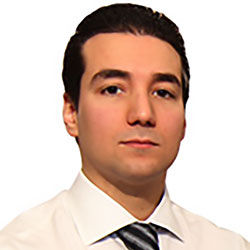


Iago Castro Asensio

Our main product is the polypropylene spunbond nonwoven, which is sold mainly for industrial and agricultural uses. Despite the product becoming more and more of a commodity and the fact that we are facing fierce competition in prices, both from other factories in China and abroad, I think that there are many potential customers that we can reach in different areas. Niches such as the bed making industry, furniture, bags, table cloths, automotive industry, advertising, crop cover and others will keep us busy in the years to come.
Western Europe, North Africa and Latin America are right now our biggest markets, which we are still developing. Asia, for us, is mainly our production site and our way to source some of the items we distribute, such as spunlace nonwovens. In my opinion, countries like Mexico, Colombia, Chile and Peru may be countries which will see growth in their technical textile needs in the near future.
Being producers for just two years, we are still a very new company. So, fortunately, we've been able to keep our export rate growing strong in the past years, reaching new markets and consolidating our traditional business fields. We expect the growth in sales to be at least 20 per cent in the next two years.
Our product, the polypropylene spunbond, is among the most basic nonwovens. So our focus is on efficiency and quality control, rather than innovation. That said, every year we spend a part of our profit improving our process to reduce defects and to get the best of our production lines without increasing the costs.
All our production is in China, so we purchase almost 100 per cent of our raw materials locally, except for the polypropylene that is often imported from Korea, Saudi Arabia and Europe.
Hundred per cent of our production is in Guangzhou, China, with all our production lines being produced and modified locally to keep our target of being a company that offers European service on Chinese production prices.
In China, the establishment of more and more production plants has increased supply as compared to the demand, making competition fiercer each year. The bigger companies are becoming bigger, and I expect the less efficient ones will disappear in the next few months. This process has already started. The local market will become more important each day, as the income of Chinese grows and their capacity absorbs more of their nonwovens production. In the rest of the world, it seems that companies such as PGI keep getting bigger by buying other factories, causing the same kind of concentration that we are seeing in China.
It's not our main field, but medical and hygiene areas seem to be the fastest growing sectors, as countries that were not using nonwovens on these areas are starting to demand them. China is the example I know better. While some years ago disposable diapers were uncommon, now the sales are growing strongly and this trend is expected to continue in future.
I have to admit that it is very unlikely that RCfil has done anything to greatly change the industry, at least not by ourselves. We are, however, a part of the change in the commercial view of many producers. Our origin as a textile supplies company that became a nonwoven distributor and just recently a nonwoven producer, taught us to take care of each customer and to try to adapt our ways to their needs as opposed to the traditional multinational corporation that establishes some rigid rules for the customer to accept if he wants to be supplied. As I said, our aim is to offer our customer a product made under Chinese production costs and under European production and service standards.
When thinking long-term, sustainability is a must. It seems to me that in the last years, during the worst part of the crisis, this concern became secondary. Now, the things are getting better. People in general and decision makers of production companies in particular are turning their attention to this problem. The main advantage with polypropylene spunbond is that it can be 100 per cent recycled, so our waste is returned to the production process to make second grade qualities, reducing our ecological impact.
DISCLAIMER: All views and opinions expressed in this column are solely of the interviewee, and they do not reflect in any way the opinion of technicaltextile.net.